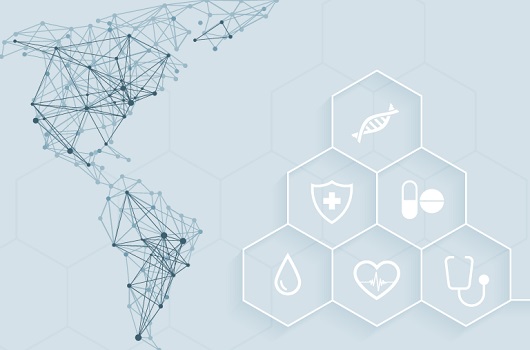2030 Agenda: Fiocruz Minas survey assesses health indicators in Americas
28/07/2022
Fiocruz Minas
In 2015, the United Nations (UN) set 17 global goals, called the Sustainable Development Goals (SDGs), aimed at building a fairer, more prosperous and egalitarian world. At the time, leaders of 193 nations, including Brazil, pledged to work to achieve the SDGs by 2030 and, in the face of this commitment, indicators were established to monitor the progress of countries in relation to the goals. In recent months, the feasibility of complying with the SDGs has been questioned, due to the impacts generated by the COVID-19 pandemic in multiple areas. Attentive to this discussion, researchers from Fiocruz Minas conducted a study to evaluate the evolution of health-related indicators in the countries of the American continent. Titled The Sustainable Health Agenda in the Americas: Pre-Pandemic Gaps and Estimates for 2030, the survey evaluated 38 indicators from 33 countries, based on data released up to 2019.
"The pandemic and its different impacts have raised some questions and there were even those who claimed that the SDGs would be unreachable, already advocating a renegotiation, even before having information about the situation of the indicators. So, in this study, we evaluated health-related bottlenecks in the countries of the American continent before the pandemic and, in addition, we make a projection for 2030, presenting trends throughout this decade", explains researcher Fabrício Silveira, from the Public Policy and Social Protection Group of Fiocruz Minas, one of the research coordinators.
To evaluate the evolution of the indicators, the researchers used an econometric regression analysis model with cross-sectional data, in which economic aspects for which reliable projections already exist for the coming years, such as gross domestic product per capita (PIBpc), the Gini index – which measures social inequality – and health investments, are used to evaluate both the pre-pandemic performance of countries in the indicators and to project their evolution in the next decade. According to the researchers, PIBpc was significant in 32 of the 38 indicators analyzed, signaling income growth's relevance for good health performance.
The rates of infant and maternal mortality, whose under-expected performance is directly associated with low economic growth, are noteworthy. On the other hand, the study shows that the increase in PIBpc does not always represent advances in indicators. This is the case of smoking, alcoholism and childhood obesity, which performed worse as per capita income increased in American countries. For the researchers, this finding is a warning sign for those who formulate public policies, showing the need for an articulated set of actions to inhibit morbidity factors.
"This shows that some issues are linked to how enrichment and impoverishment happen in countries, that is, it has to do with the economic development model. Thus, when thinking about public policies, it is also necessary to consider how development happens in a given region," says researcher Rômulo Paes, also leading the study.
Also, according to the study, inequality, assessed by the Gini index, significantly impacted ten indicators, especially neonatal and child health, in addition to injuries, violence and infectious diseases, all with underperformance. Health investments also interfered in the performance of these topics.
According to the research, most of the indicators evaluated in the various health issues were below what was expected in most countries in the region even before the beginning of the COVID-19 pandemic. On the other hand, the indicators in which countries stand out positively are those related to environmental risks, except those that refer to the provision of safe water services and air pollution. Yet the greatest possibilities for advances by 2030 are related to the themes where countries presented the greatest deficits, such as infectious diseases and maternal and infant mortality. Estimates also indicate that stimulating GDP growth can be an important strategy for progress in indicators, especially because of their role in expanding access to and coverage of health services.
The Brazilian situation
In line with the other countries of the continent, Brazil performs below expectations in most indicators. Among the worst performances are those in relation to neglected diseases and homicides, a situation very similar to what occurs in most of the continent. Another negative indicator is malaria, but in this case, Brazil is in the opposite direction of what happens in a big part of the continent, which has positive numbers.
The researchers point out that, although the study presents an analysis of the indicators in a period prior to the COVID-19 pandemic, it is possible to affirm the need for increasingly concentrated efforts to meet the SDGs goals. In their conclusions, the researchers recall that the COVID-19 crisis showed that countries with effective social protection systems and universal health coverage are better prepared to respond not only to current crises, but also to future crises. Thus, compliance with the SDGs will be a major factor in fighting against and overcoming the health emergency.



